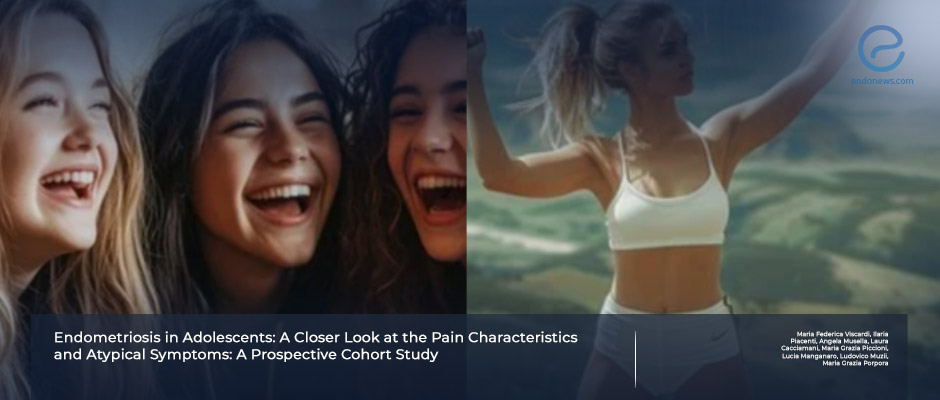Recognizing Adolescent Endometriosis: Early, Intense, and Atypical
May 8, 2025
Adolescents with endometriosis report earlier menarche, more intense dysmenorrhea, and unique symptom profiles.
Key Points
Highlights:
- Early recognition of endometriosis symptoms in adolescents may support timely diagnosis and tailored treatment, potentially leading to improved clinical outcomes and enhanced quality of life (QOL).
Importance:
- Hormonal contraceptives and dienogest emerge as effective, safe, and well-tolerated treatment options for both pain management and QOL for symptomatic adolescents.
What’s done here?
- A prospective cohort study compared adolescents (age:12–18, n=92) and adults (age>18, n=146) with endometriosis.
- Clinical data included menarche age, cycle length, pain types, analgesic use, atypical symptoms, and endometrioma size.
- Hormonal treatment outcomes, side effects, and compliance were assessed.
- Quality of life was measured using the SF-12 at baseline and after six months.
Key results:
- Adolescents significantly had earlier menarche, longer periods, and greater analgesic use.
- Adolescents experienced more frequent and severe dysmenorrhea, less NSAID response, and more nausea and headaches.
- Chronic pelvic pain was described as more “confined” and “oppressive,” with higher scores in adolescents.
- Hormonal contraceptives and dienogest were effective across both groups, with improved pain control and QOL.
Strengths and Limitations
- Pure symptom evaluation without prior hormonal treatments, pregnancies, or surgeries is the main strength.
- Small sample sizes could be accepted as the limitation.
FROM THE EDITOR-IN-CHIEF - ENDONEWS
"This study provides important data on the distinct presentation of endometriosis in adolescents. Their findings emphasize the need for age-specific recognition and management, as symptoms in younger patients often differ from those seen in adults.
The work supports earlier diagnosis and tailored treatment as key steps toward improving outcomes and quality of life in this underrecognized group."
Lay Summary
Adolescents experiencing pelvic pain often face delayed or missed diagnoses due to atypical symptoms of endometriosis. Unlike in adults, their pain may not follow classic patterns, making it harder to recognize and treat the disease early.
In a recent prospective study, the authors led by Dr.Porpora from Italy examined differences in symptom profiles and treatment responses between adolescents (ages 12–18) and adult women with endometriosis. The study, published in the Journal of Clinical Medicine, highlighted striking distinctions in how endometriosis presents in younger patients.
Adolescents reported earlier onset of menstruation, longer periods, and greater dependence on painkillers. Their menstrual pain was more intense and longer-lasting. They also described their chronic pelvic pain as more “confined” and “oppressive,” in contrast to the widespread pain reported by adults. Additional symptoms like headaches and nausea were also more common in the younger group.
The study found that hormonal contraceptives and dienogest were both effective and well-tolerated, offering significant relief and improving quality of life in both adolescents and adults.
These findings support the need for age-specific awareness, earlier diagnosis, and personalized treatment strategies for adolescents with suspected endometriosis.
Research Source: https://pubmed.ncbi.nlm.nih.gov/40004922
endometriosis adolescents chronic pelvic pain dysmenorrhea quality of life hormonal treatment dienogest

